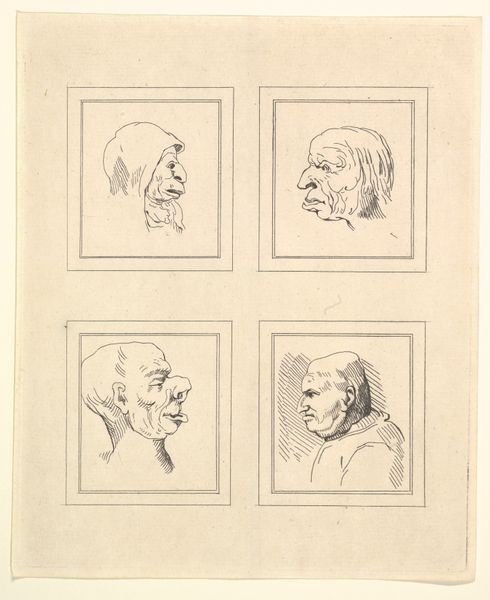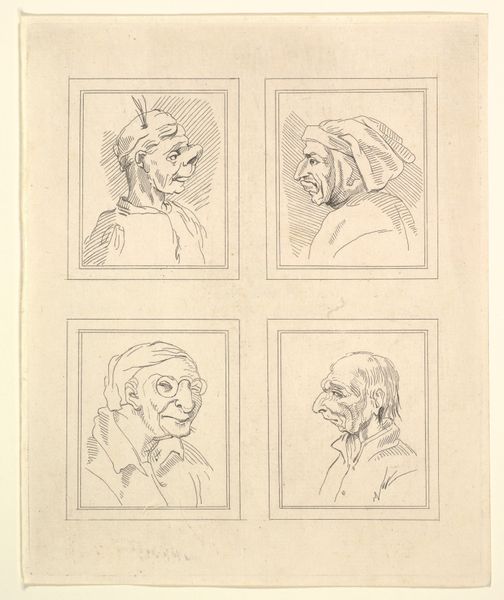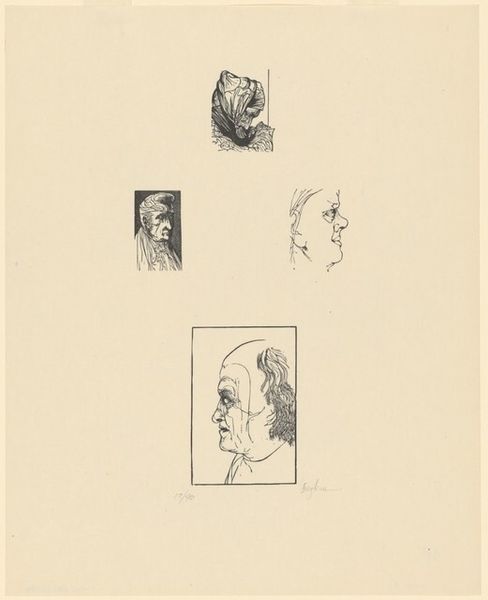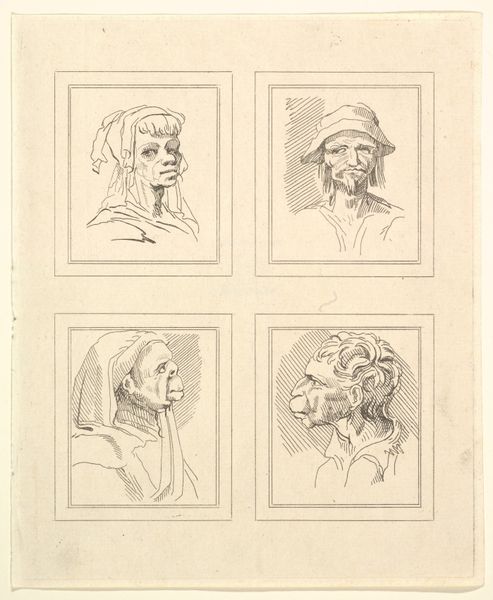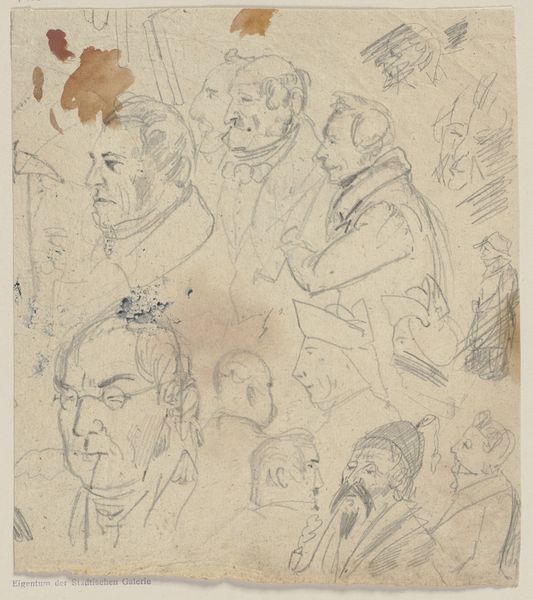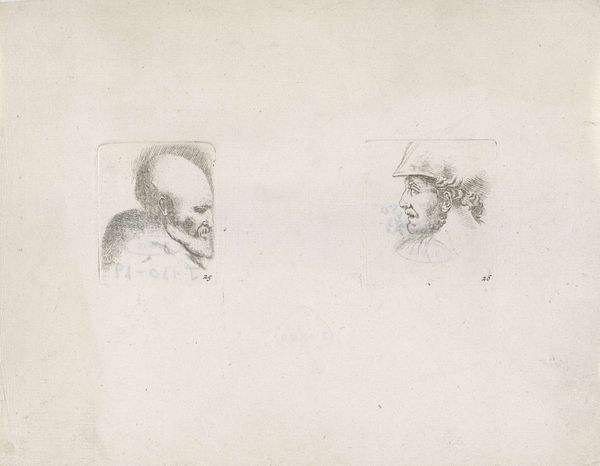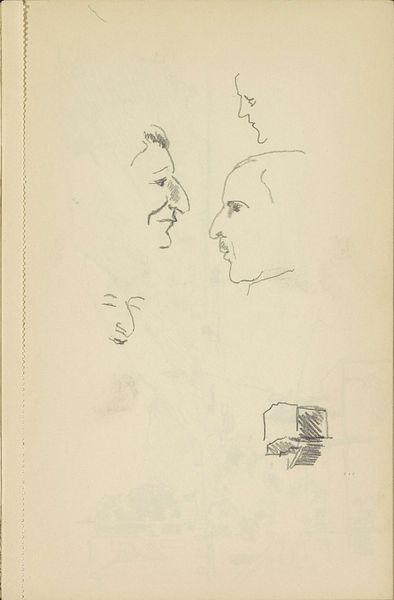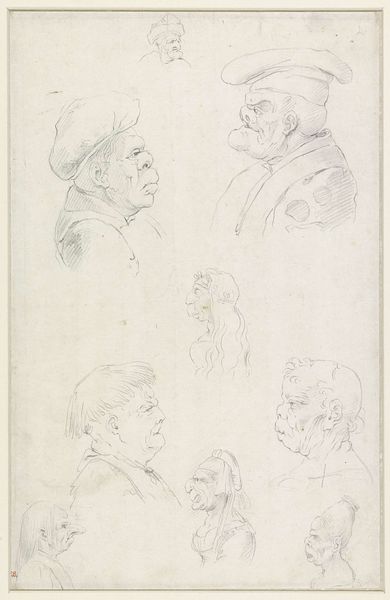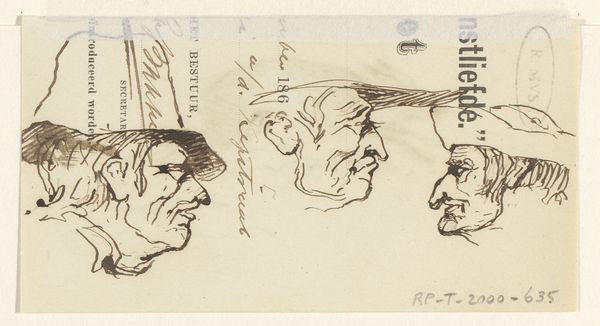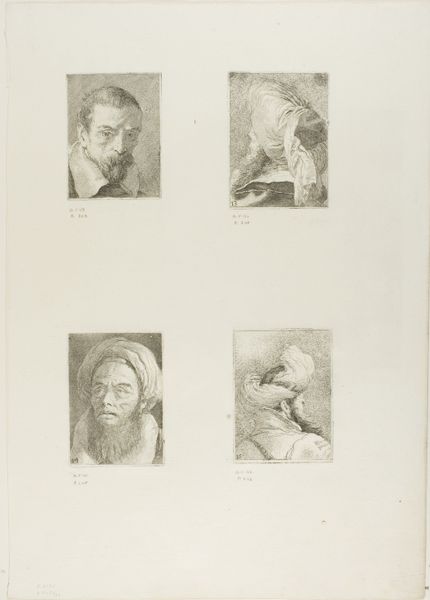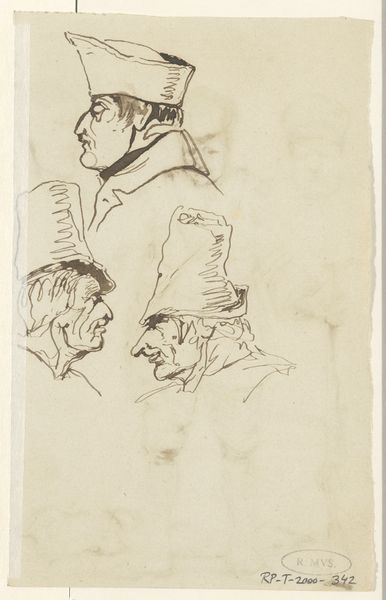
Four Heads (from Characaturas by Leonardo da Vinci, from Drawings by Wincelslaus Hollar, out of the Portland Museum) 1786
0:00
0:00
Dimensions: Plate: 7 11/16 x 6 5/16 in. (19.6 x 16 cm) Sheet: 7 15/16 x 6 1/2 in. (20.2 x 16.5 cm)
Copyright: Public Domain
Curator: Wenceslaus Hollar's print, "Four Heads," from 1786, presents a striking study in caricature. The source is "Characaturas by Leonardo da Vinci, from Drawings by Wincelslaus Hollar, out of the Portland Museum." Editor: The immediate impression is one of grotesquery tempered by refinement. The etching possesses a delicate line quality despite depicting rather unflattering physiognomies. Each portrait is contained within its own meticulously ruled box, a structured contrast to the organic distortions of the faces. Curator: Indeed. Hollar, though Czech, was deeply influenced by the Italian Renaissance masters. It's critical to consider how the act of replication and interpretation, in itself, became a site for both admiration and slight subversion, almost two centuries after Leonardo's initial sketches. Editor: These are not simple reproductions; each face is etched with distinct personality, leaning into caricature. I am struck by the exaggeration of features – the noses, the chins, and brows – they possess almost symbolic weight, revealing an element of social critique inherent in such distortions. They challenge classical ideals of beauty, engaging in dialogue with the contemporary politics of portraiture and satire. Curator: Precisely, the strategic exaggeration directs the viewer to an intellectual and historical narrative. The very structure of the image, divided into quadrants, echoes the period’s scientific inclinations—cataloging and classifying specimens. The work can be seen as a form of proto-anthropology, exploring types and physiognomic theories prevalent at the time. Editor: The subtle cross-hatching within the frames gives a sense of depth but also restricts the figures, boxing them in. This enhances the viewing experience by focusing all attention on the unique expression, effectively staging these characters, underscoring Hollar's commentary on social stereotypes. Curator: Moreover, the graphic qualities demand attention. The very lines Hollar employed, so spare yet expressive, elevate these potentially base subjects to a register of aesthetic contemplation. It prompts questions about what we find pleasing or repulsive. Editor: Absolutely. What started as an act of documentation transformed into a sophisticated cultural document itself. Thank you. Curator: A keen insight, demonstrating the depth and diversity that lie within what one might easily pass over as merely a reproduction.
Comments
No comments
Be the first to comment and join the conversation on the ultimate creative platform.
